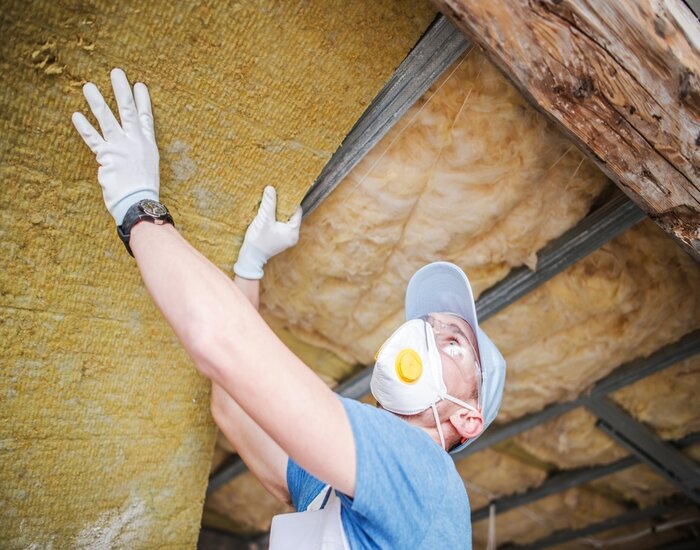
How old is the insulation in your attic?
Insulation plays a key role in keeping your home or commercial property running as efficiently as possible.
If your space isn't heating as well as it once did, it's time to replace your insulation.
Yet, it's not as simple as it sounds.
Read on to learn more about how to remove blown in insulation and why you might want to let a professional do the job.
You've noticed that your insulation isn't doing its job anymore and realize it's time for a change.
Why can't you add to the insulation that's already there?
Common reasons for replacing insulation are mold issues, wildlife damage, and the decision to finish an attic space.
Animals such as mice, raccoons, squirrels, opossums, and more can invade your attic and tear up your insulation. Their feces and urine will reduce your air quality and they could contaminate your insulation with mites, fleas, and ticks.
If your attic has suffered water damage from a burst pipe or a roof leak, mold will start growing fast. As blown in insulation sits tight up against wet wood and drywall it creates the perfect environment for mold growth.
So, you've decided to tackle the project of removing your old insulation. Where do you start?
There are several different types of insulation, so you should first identify the type you have in your attic.
Blown in insulation is often made up of small particles of foam or fiber, but it is also made of other materials. These particles are so small that they can be sprayed and conform to any space, creating a tight seal.
Blown in insulation is popular in spaces where it would be difficult to install insulation using other methods.
If your structure is older, it may contain asbestos insulation. There are test kits available to test for asbestos. If you are unsure if asbestos is present, you should hire a professional.
Gather your equipment and get organized before removing any insulation.
You should have protective gear for yourself, including gloves, goggles, long sleeves, pants, and a respirator. You do not want old insulation to get inside of your lungs.
To dispose of old insulation, you will need plenty of garbage bags. You'll also need a tarp to place underneath the bags as you fill them.
Finally, set your ladder in place and have your wet/dry or HEPA vacuum handy.
Ensure that all doors and openings that lead to your living or work space are closed. You do not want contaminants traveling through the air and settling where they can be ingested by you or other people.
Since blown in insulation is usually found in older structures, the floor is not always a safe place.
If necessary, reinforce the floor with wooden planks across the floor joists. This will give you a safe and steady area to walk on.
You'll want to set up your disposal area first so that you aren't struggling when your arms are full of old insulation. It is imperative that all old insulation be disposed of quickly and neatly to reduce the number of contaminants in the air.
Put your tarp outside on the ground, wherever you want your garage bags to end up. You'll want to keep the bags on the tarp as you fill them.
It is time to make use of the safety equipment you gathered at the beginning of your project.
You will want to wear the safety gear at all times to protect your eyes, ears, and lungs from irritation.
If fiberglass touches your skin, it may create a sharp, stinging sensation. You will have the urge to rub it. Don't. It will only make it worse, driving the particles deeper into your skin. Rinse your skin off with water and it will eventually go away.
Now, you can actually begin to vacuum out the insulation. You'll want to work quickly and work your way backward from the back of the attic.
If you're using your own vacuum, keep an eye on it to make sure you are emptying it often enough. You will put that respirator to the test.
It depends on the size of your space, but there could potentially be hundreds of trash bags to pick up.
So, what are you supposed to do with it?
As you're filling the garbage bags, squeeze them to let out any excess air before tying them. For peace of mind, you can place each bag into a second one to create a better seal.
Next, you'll have to do some research.
Disposal and recycling procedures vary by area. Call your local waste-management office and ask what to do with the insulation of your type.
In some cases, you can place the bags out with your regular trash. In others, you will have to take it to a designated area at the dump.
If there is a fiberglass insulation manufacturer nearby, you can also call and ask if they have a recycling program.
With better insulation, you will experience fewer insects and less pollen and dirt in your space.
You'll benefit from lower utility bills, as heat and cool air will no longer be able to leak out of your poorly insulated attic.
Most importantly, you will protect yourself and others from the harmful contaminants found in the old insulation.
If you're questioning how to remove blown in insulation, you will discover that it's a dirty job.
Contact our staff today to discuss our insulation replacement services and request a free estimate.